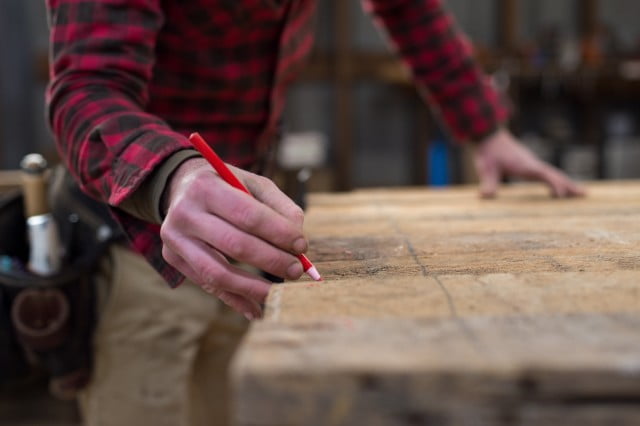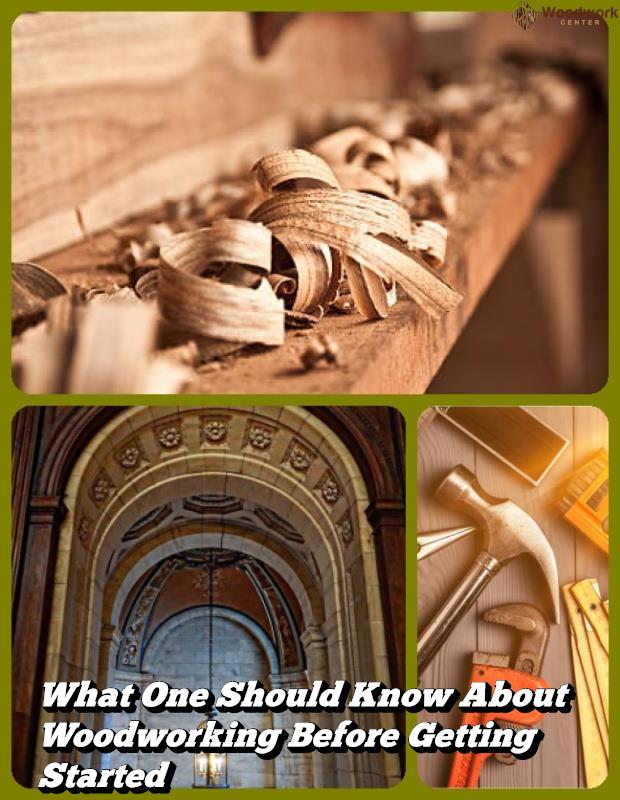Woodworking has experienced a surge in popularity as more individuals seek out creative and hands-on hobbies. The art of working with wood offers a sense of fulfillment, allowing you to craft beautiful, functional items from scratch. Whether you’re drawn to carpentry, furniture making, or woodturning, woodworking provides countless opportunities for creativity and personal growth.
In this comprehensive guide, we will help you get started in the world of woodworking. From understanding the different types of woodworking to gathering essential tools and learning basic techniques, this article will provide the guidance you need to embark on your woodworking journey. With step-by-step instructions, insights into wood selection, and suggestions for beginner-friendly projects, you’ll be well-equipped to dive into this rewarding hobby.
So if you’re eager to unleash your creativity and develop new skills with wood, read on. This guide will introduce you to the exciting world of woodworking and set you on a path towards creating truly remarkable pieces that showcase your talent and passion. Get ready to embrace the challenges and joys that come with working with wood – it’s time to start your woodworking adventure.
Choosing Your Path
Woodworking is a diverse and expansive craft with various branches to explore. As a beginner, it’s important to understand the different types of woodworking so you can choose the path that best suits your interests and goals. Each branch of woodworking offers unique challenges and opportunities for creativity, allowing you to specialize in your preferred area.
One popular branch of woodworking is carpentry, which involves constructing structures such as buildings, cabinets, and furniture. Carpenters work with a variety of materials including wood, metal, and concrete. They utilize precision tools like saws, drills, and planers to create functional and aesthetically pleasing pieces.
Furniture making is another exciting avenue in woodworking that allows you to create custom pieces for homes or businesses. This branch involves building tables, chairs, beds, and other household items using various joinery techniques. Furniture makers have the opportunity to showcase their craftsmanship and design skills by creating unique pieces that are both functional and beautiful.
For those who enjoy working with smaller projects or turning wood on a lathe, woodturning may be the perfect fit. Woodturning involves shaping wood into symmetrical designs such as bowls, vases, or decorative ornaments using specialized tools called lathes. This branch requires patience and precision as you cut away excess material to reveal the desired shape.
These are just a few examples of the many branches of woodworking available for you to explore. It’s important to research each type thoroughly to understand the tools, techniques, and skill sets required for each. By identifying the type of woodworking that resonates with you most, you can focus your efforts on honing those specific skills and becoming an expert in your chosen field.
Remember that there are no limits to what you can achieve in woodworking once you’ve chosen your path. The journey may seem overwhelming at first but by starting small and continuously learning new techniques, you’ll be able to take on more complex projects over time. So, take some time to consider which branch of woodworking speaks to you and get ready to embark on an exciting and fulfilling journey in the world of woodworking.
Gathering the Basic Tools
Woodworking is a fulfilling hobby that allows individuals to channel their creativity and craftsmanship into crafting beautiful, functional items from wood. However, before diving into your first woodworking project, it is important to gather the basic tools that every beginner should own. Having the right equipment not only ensures the success of your projects but also makes woodworking more enjoyable and efficient.
A workbench is one of the most essential tools for any woodworking project. It provides a sturdy and stable surface for cutting, shaping, and assembling wood pieces. When selecting a workbench, consider its size, weight capacity, and stability to accommodate your projects. Additionally, invest in a vice or clamps to secure your workpiece firmly in place while working.
Power saws are another vital tool in any woodworker’s arsenal. A circular saw or a jigsaw will allow you to make precise cuts with ease. Chisels and hand planes are also indispensable tools for shaping and smoothing wooden surfaces. Opting for high-quality chisels with sharp blades will make your work more efficient.
Accurate measurements are crucial in woodworking, so investing in measuring instruments such as tape measures, rulers, and marking gauges is essential. These tools ensure precision in cutting and joining wood pieces together seamlessly.
While these tools form the foundation of any woodworking workshop, there are additional tools that can enhance your woodworking experience further. For example, having a power drill allows you to make holes accurately and efficiently. A router enables you to create intricate designs on the edges of your wood pieces.
When gathering tools as a beginner, it is important to strike a balance between quality and affordability. While cheap tools may seem tempting initially due to their lower price point, they may not offer durability or accurate results. It is recommended to invest in quality tools that will last longer and provide better performance over time.
Safety First
Woodworking can be a fulfilling and creative hobby, but it is important to prioritize safety to avoid accidents and injuries. Understanding woodworking safety measures is crucial for beginners before embarking on any projects. By following proper safety precautions, woodworkers can ensure a safe and enjoyable experience in their craft.
The Importance of Safety Measures
The first step in woodworking safety is recognizing its importance. Woodworking involves the use of various tools and machinery that can pose risks if not handled correctly. Accidents such as cuts, splinters, eye injuries, and inhalation of dust particles are common without the appropriate safety measures in place. By prioritizing safety, woodworkers can minimize the chances of these accidents occurring.
Personal Protective Equipment (PPE)
One of the key aspects of woodworking safety is the use of personal protective equipment (PPE). This includes items such as safety goggles, ear protection, dust masks or respirators, and gloves. Safety goggles protect eyes from flying debris while ear protection helps prevent hearing damage from loud machinery. Dust masks or respirators shield against inhaling harmful wood dust particles that may cause respiratory problems over time. Gloves offer hand protection from sharp tools and surfaces.
Safe Working Habits and Workspace Maintenance
Practicing safe working habits is essential in woodworking. This includes maintaining a clean and organized workspace to minimize hazards and ensure efficient work. Tools should always be kept in their designated places when not in use to prevent accidental contact or falls. Additionally, woodworkers should have good posture while working to avoid strain or back injuries.
Regular maintenance of tools is also crucial for safety purposes. Blades should be kept sharp to prevent kickbacks or losing control during cutting. Checking cords and plugs for any signs of wear can help prevent electrical accidents.
Getting to Know the Wood
Wood is the foundational material in woodworking, so it’s important for beginners to familiarize themselves with different types of wood and their attributes. Understanding the characteristics of each wood species will help beginners make informed choices about which type of wood to use for their projects. In this section, we will introduce readers to various wood species commonly used in woodworking, explain their attributes, and provide guidance on choosing the right wood for their needs.
There are numerous wood species available for woodworking, each with its own unique qualities. Some common types of wood used in woodworking include oak, pine, maple, mahogany, and walnut. Oak is known for its strength and durability, making it a popular choice for furniture making.
Pine is a softer wood that is easy to work with and often used for building simple structures or crafting intricate designs. Maple is prized for its light color and uniform texture, making it ideal for cabinetry or furniture with a natural finish. Mahogany is a hardwood that boasts rich reddish-brown tones and excellent workability.
When selecting wood for a project, it’s important to consider factors such as grain patterns, hardness levels, durability, and whether the project will be primarily indoors or outdoors. Grain patterns can add visual interest to a finished piece but may affect how the wood behaves when cut or carved.
Hardness determines how easily the wood can be worked with tools like saws or chisels. Durability should be considered if the project will be exposed to moisture or other environmental factors.
To choose the right type of wood for a project, beginners should assess their specific needs and preferences. It’s also helpful to consult resources such as woodworking books or online forums where experienced woodworkers share their insights on different types of woods.
| Wood Species | Attributes |
|---|---|
| Oak | Strength, durability |
| Pine | Soft, easy to work with |
| Maple | Light color, uniform texture |
| Mahogany | Rich reddish-brown tones, excellent workability |
By understanding the characteristics of different wood species and considering their specific project requirements, beginners can make informed choices about which wood to use. This knowledge will contribute to successful woodworking projects and help beginners develop their skills in working with different types of wood.
Mastering the Basics
Woodworking is a craft that requires mastering a variety of techniques to create beautiful and functional pieces. In this section, we will explore some essential woodworking techniques for beginners that will serve as the foundation for your woodworking journey. Whether you are interested in carpentry, furniture making, or woodturning, these techniques are fundamental and applicable across different branches of woodworking.
Measuring and Marking
Accurate measurements and precise marking are crucial in woodworking to ensure your projects fit together seamlessly. Start by investing in a quality tape measure and marking tools like a marking gauge or a combination square. Learn how to read measurements accurately and mark the spots where you need to make cuts or join pieces together.
Cutting
Having the ability to make clean and accurate cuts is essential in woodworking. There are various cutting tools you can use depending on the task at hand, such as a handsaw, circular saw, or jigsaw. Take the time to learn proper cutting techniques, like maintaining a steady grip and using appropriate cutting angles.
Joinery
Joinery refers to the methods used to connect two or more pieces of wood together. Basic joinery techniques that beginners should master include butt joints (simplest form of joining two boards at right angles), miter joints (joining two boards at an angle), and lap joints (overlapping two boards). These techniques allow you to create strong connections while adding structural integrity to your projects.
Sanding
Sanding plays an important role in achieving smooth surfaces and preparing wood for finishes like staining or painting. Invest in different grits of sandpaper or sanding blocks for different stages of sanding, starting with rougher grits and progressing towards finer grits for a polished finish. Learn proper sanding techniques such as applying even pressure and sanding with the grain of the wood.
Finishing
While not strictly a technique, finishing is an essential part of woodworking. Finishes protect the wood from moisture, enhance its appearance, and add durability to your projects. Beginners can start with simple finishes like varnish or polyurethane, learning how to apply them evenly and achieve desired results.
By mastering these essential woodworking techniques, beginners will gain confidence and skills to take on more complex projects. It is important to practice each technique on scrap wood before applying them to your actual projects. Remember, woodworking is a craft that requires patience and perseverance, so don’t be discouraged if you encounter challenges along the way. Embrace the learning process and enjoy the journey of becoming a skilled woodworker.
Learning From the Pros
In today’s digital age, there is a wealth of information and resources available online for aspiring woodworkers. Whether you’re looking to learn new techniques or gain inspiration for your next project, the internet can be a valuable tool. Here are some ways you can leverage online resources and woodworking communities to enhance your woodworking journey.
Online Tutorials, Videos, and Guides
One of the best ways to learn woodworking is through online tutorials, videos, and guides. There are countless websites and YouTube channels dedicated to teaching woodworking skills step-by-step. These resources often cover a wide range of topics from basic techniques to advanced projects.
When searching for tutorials or videos, be sure to choose reputable sources that have good reviews or recommendations. Look for content creators who have extensive knowledge and experience in woodworking. Some popular platforms include FineWoodworking.com, Wood Magazine’s YouTube channel, The Wood Whisperer, and Paul Sellers.
Woodworking Forums and Communities
Joining online woodworking forums and communities is another excellent way to connect with experienced woodworkers from around the world. These forums provide spaces for beginners to ask questions, seek advice, share projects, and exchange ideas with fellow enthusiasts.
Some well-known woodworking forums include WoodNet.net, SawMillCreek.org, and LumberJocks.com. These communities often have sections dedicated to specific topics such as hand tools, power tools, carving, furniture making, and more. Participating in these discussions can help you gain knowledge, solve problems you may encounter during your projects, and build relationships with other woodworkers.
Local Workshops
While online resources are invaluable for learning woodworking skills at your own pace from home (especially during times when in-person gatherings are limited), it’s also beneficial to look into local workshops or classes where you can receive hands-on instruction. Many woodworking schools, community colleges, and even some craft stores offer woodworking classes for beginners.
Attending these workshops not only allows you to learn from experienced instructors in a structured setting but also provides an opportunity to connect with other individuals who share your passion for woodworking. Building relationships with like-minded individuals can lead to lasting friendships, mentorship opportunities, and the chance to collaborate on future projects.
By leveraging online resources and actively participating in woodworking communities, you can accelerate your learning curve and gain valuable insights from professionals and fellow enthusiasts alike. Remember that woodworking is a journey, and the supportive online community is there to help you every step of the way. Embrace this network of knowledge and take advantage of the vast resources available as you embark on your woodworking adventure.
Your First Woodworking Project
Choosing an Achievable Starter Project:
When starting out in woodworking, it’s important to choose a beginner-friendly project that aligns with your skill level and interests. A good starter project allows you to practice basic woodworking techniques and gain confidence in your abilities. Here are some suggestions for achievable projects that will help you develop foundational skills:
- Simple Cutting Board: Making a cutting board is a great way to learn basic woodworking techniques like measuring, cutting straight lines, and sanding. Start with a hardwood like maple or walnut, and follow step-by-step instructions to create a functional and beautiful cutting board.
- Birdhouse: Building a birdhouse is another popular beginner project. It involves simple joinery techniques such as miter cuts, drilling holes for entrance and ventilation, as well as sanding and finishing. Choose durable wood like cedar to ensure the longevity of your birdhouse.
- Small Shelf: A small shelf can be both practical and aesthetically pleasing. The construction of a shelf introduces beginners to additional techniques like making dado or rabbet joints for attaching shelves, using wood glue for added strength, and finishing touches such as staining or painting.
Regardless of which project you choose, it’s essential to have detailed instructions, measurements, and a list of materials needed before getting started. This ensures that you have everything necessary to complete the project successfully.
Remember that while following instructions is important at this stage, don’t be afraid to personalize your project by adding unique design elements or experimenting with different finishes. Woodworking is not only about mastering specific projects but also about embracing your creativity and making each piece unique.
As you embark on your first woodworking project, take your time and enjoy the process of learning new skills along the way. Embrace any mistakes or challenges as opportunities for growth and improvement. With patience, practice, and dedication, you’ll soon be on your way to creating more advanced projects and fulfilling your woodworking goals.
Conclusion
In conclusion, embarking on a woodworking journey is an exciting and rewarding endeavor. Throughout this comprehensive guide, we have explored the world of woodworking and provided valuable insights on how to get started. From choosing the right path and gathering essential tools to understanding safety measures and mastering basic techniques, you now have a solid foundation for your woodworking journey.
Remember, woodworking offers endless possibilities for creativity and accomplishment. As you begin your journey, start small and embrace the learning process. Take the time to explore different types of woodworking and identify the path that resonates with you the most. By doing so, you will find joy in creating beautiful, functional items from wood.
Additionally, don’t hesitate to leverage online resources and join woodworking communities. Learning from experienced woodworkers and connecting with like-minded individuals will enhance your skills and provide invaluable support throughout your woodworking journey. Seek advice when needed, share your projects with others, and be open to learning new techniques.
Lastly, choose an achievable starter project that suits your interests and skill level. Whether it’s a simple cutting board or a birdhouse, personalize it and showcase your creativity. Remember that practice makes perfect; refine your skills through practice projects before taking on more complex endeavors.
Your woodworking journey begins now. Embrace the excitement of creating something unique with your own two hands while continuously honing your skills along the way. No matter where this journey takes you, enjoy every moment of it as you bring craftsmanship to life through the art of woodworking.
Frequently Asked Questions
How do I get into woodworking with no experience?
Getting into woodworking with no prior experience can be an exciting and rewarding journey. One of the first steps is to familiarize yourself with the basic tools and materials used in woodworking. Start by researching different types of wood, their characteristics, and how they are commonly used in various projects.
Next, acquire some essential tools such as a tape measure, saw, chisels, sandpaper, and clamps. It’s also beneficial to seek out instructional resources like books, online tutorials, or even local classes or workshops that provide beginner woodworking instruction. Starting with simple projects like building a small shelf or picture frame allows you to practice foundational skills while gaining confidence and proficiency.
Can I teach myself woodworking?
Yes, it is absolutely possible to teach yourself woodworking. With the abundance of educational resources available both online and offline, self-learning has become increasingly accessible and effective. Start by immersing yourself in woodworking literature or tutorial videos that cover the basics of various techniques, tools, and safety practices.
Building a foundation of knowledge will better equip you for hands-on practice independently at your own pace. As you progress through different projects – experimenting with new skills and techniques – keep learning from both successes and failures along the way. Self-teaching allows for personal exploration and growth within the craft.
What do I need to get started in woodworking?
To get started in woodworking, acquiring a few fundamental items will set you on the right path. First and foremost, invest in a sturdy workbench or table where you can comfortably complete your projects. Essential hand tools such as a measuring tape, crosscut saw, coping saw, chisels (both straight-edged and beveled), mallets or hammers are necessary for most woodworking tasks to measure accurately and shape wood pieces effectively.
You will also need basic fasteners like screws and nails along with appropriate drill bits or screwdriver sets. Additionally, make sure to have access to adequate workspace lighting as well as safety equipment including protective glasses or goggles, ear protection, and a dust mask. As you progress and expand your skillset, you can gradually invest in power tools like a drill press or table saw, but starting with basic hand tools is sufficient for entry-level woodworking projects.

Hi everyone! I’m a woodworker and blogger, and this is my woodworking blog. In my blog, I share tips and tricks for woodworkers of all skill levels, as well as project ideas that you can try yourself.





